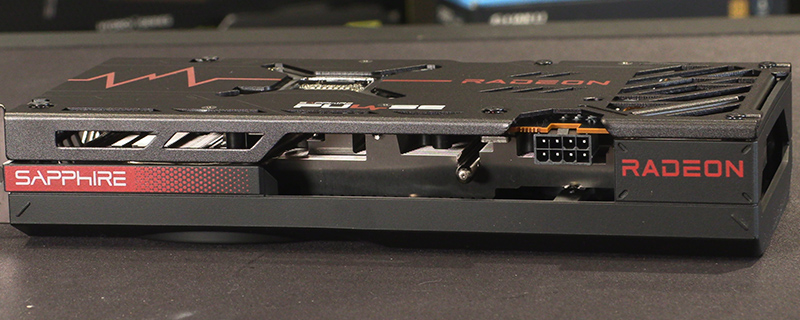AMD Radeon RX 7600 and Sapphire RX 7600 Pulse Review
Conclusion
The very nature of our job means that we’ve seen the very best hardware that money can buy, and whilst it would be considered easy to become snooty and snobbish like certain sections of the internet, we’re also highly aware of the importance of getting value for money. Nobody becomes a freelance writer because the pay is good. Thus it might be considered damning with faint praise to talk about other considerations but know that we mean what we say from the heart, as always, and wouldn’t tell you something just because it sounds good, or because we’ve been sent something. We pride ourselves on our impartiality, and when it comes to products that aren’t going to be brought by those with deep pockets without a care for what we believe that impartiality is of the utmost importance. Any new graphics card purchase is a big investment.
What strikes us most about the Radeon RX 7600 is how flipping good it is, almost regardless of what we threw at it. You barely have to go back to the 5000 series, and indeed a handful of the 6000 series, to know that unless you brought one of the very top tier Radeon cards you were going to be left, if not disappointed as such, then at least not blown away. The RX 7600 blew us away, with a few tiny caveats.
The elephant in the room is, of course, ray tracing. It’s still a bit of a weakness of the Radeon cards, but it took Nvidia three generations to get it right and we aren’t remotely surprised that AMD used the majority of the R&D time in making their RDNA architecture work well across a broad spectrum of titles, particularly as ray tracing is still, four years later, a bit of a rare find in most AAA titles, let alone the majority of games out there. However, with the RNDA 3 and the new FSR 2.1, AMD are really getting close. Quite how close they’ve got in a short space of time is worthy of respect, especially when it wasn’t that long ago – pre RDNA – that they seemed like a spent force in the graphics card world.
Speaking of FSR 2.1, that’s absolutely the cornerstone of the development path they’re on, and we think they have an ace in the pack that might end up making it the dominant technology when it comes to getting high FPS without compromising image quality too much. Nvidia’s DLSS 3 technology does it brilliantly, as we saw on their 4000 series cards, but whilst that is a proprietary technology, FidelityFX Super Resolution (FSR) is open source. Anyone can use it on their titles, it isn’t even card specific. Want to use it on your GeForce? Go ahead. Like any technology tied to a brand – PhysX, Apple’s endless charging port changes, Shutter based 3DTVs etc – the winner will always be the technology that works on the largest number of systems, and as you saw from our testing results even the 32 CU RDNA 3 architecture on the Radeon RX 7600 has enough horsepower to get the job done, with massive FPS boosts in compatible titles.
With seriously aggressive pricing, and performance that is more than a match for the high-selling RTX 3060 whilst also comfortably besting its forebear the RX 6600, the latest Radeon RX 7600 is the perfect card if you want to be gaming on a budget without having to limit yourself to pixel-art Indies and ancient old 3D games. It is good without FSR, but with it it becomes fantastic value for money.
Discuss the AMD Radeon RX 7600 and Sapphire RX 7600 Pulse in our OC3D Forums.




